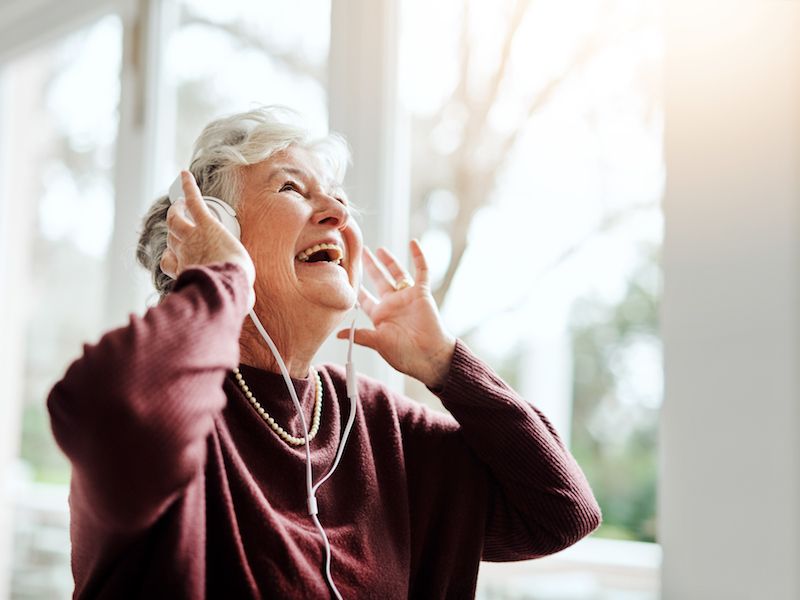
People who work in loud surroundings like construction sites or at heavy metal concerts are not the only ones impacted by noise related loss of hearing. Recreation associated noise exposure can be just as harmful as work related noise exposure. What kind of exposure are we talking about? Music, gaming, streaming video or anything that you would listen to through headphones or earbuds.
You might not believe your smartphone or tablet can go that loud. But these devices can attain sustained volumes of over 105 dB, which is close to the ordinary human pain threshold. This is the volume where noise starts to literally hurt your ears. So what’s the answer for safeguarding your hearing against volume related damage.
The volume level here is significant. Listen with the volume at or below 60% for no more than 60 minutes at a stretch (how long you listen for also matters), this is called the 60/60 rule.
Make a Setting on Your Hearing Aids For Music
Make certain, if you’re wearing hearing aids, you don’t attempt to drown out other sounds by turning your streaming music up too high. And there are much healthier ways to listen to music so ask us about that also. Hearing aids aren’t made to make music clearer like they do with voices so if you’re really into music, you may have discovered this. While listening to music, we can most likely make a few modifications to help improve the sound quality and reduce the feedback.
Picking out Headphones
When choosing headphones there are lots of options, especially if you use hearing aids. It might be a matter of personal choice, but there are some things you should think about there too.
Over-the-Ear Headphones
While the foam-covered earpieces that was included with your old Walkman are basically no longer used, over-the-ear headphones have made a comeback. Often shockingly costly, they offer a large variety of color possibilities and celebrity endorsements, and of course, exceptional sound quality. And unlike those little foam pads, these go over the whole ear, stopping outside sounds.
Main-stream perception is that these are safer than in-ear headphones because the source of the sound is further from your eardrum. But the reality is they’re often able to reach louder volume than their smaller kin, the speakers are a lot larger. Also, noise-canceling may help you ignore the crying baby on your flight, but in other situations, it can block sounds you need to hear (like a honking car). With that being said, because they cancel out outside sound, you can typically decrease the volume of what you’re listening to so it’s not so loud that it will harm your ears.
Earbuds
The normal earbuds that are included with devices like iPhones are much maligned for their poor quality of sound, although a lot of people still use them because hey, they were included with the phone. Plus, with newer versions that don’t have a headphone jack, staying with Apple’s earbuds can simply be easier.
The downside, in addition to the poor sound quality, is that basic earbuds can’t cancel outside sounds, so you’re more likely to crank up the volume. It’s generally thought that inserting earbuds so close to your eardrum is the main issue but it’s really the volume.
Noise Canceling Earbuds
More comfortable than regular earbuds, models that have a round rubber tip are the choice of many people because they help block outside sound. The rubber molds to the shape of your ear, producing a seal that stops other sounds from entering. Not to sound like a broken record, but these have the same disadvantages as the other two (volume is the main problem), as well as carrying the same caution as over-the-ear headphones (they can block out warning sounds). Needless to say, these won’t work for you if you have hearing aids.
You might have to try out more than one pair before you find headphones that are what you are looking for. Your expectations, acoustically, will be different depending on what kind of usage you normally give them. Enjoying your music at a healthy volume and finding headphones that help you do that is essential.
How to be Certain Your Hearing is Protected
How can you be sure it’s okay? There’s an app for that…If you use a smartphone, you can get the National Institute for Occupational Safety and Health’s free Sound Level Meter app. There are different apps out there, but research has discovered that the dependability of these other apps is hit-and-miss (also, for reasons yet unknown, Android-based apps have proven to be less reliable). That prompted NIOSH to create an app of their own. The app enables you to measure external noises, but sounds coming from your device’s speakers can be measured too, this means, the true volume of what’s going to your ears. You have to put in a little effort, but taking these types of preventative measures can help protect your ears.